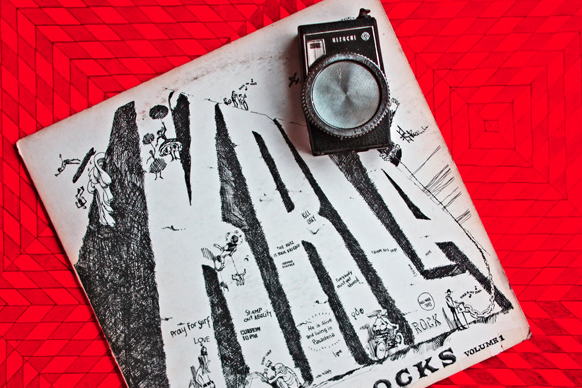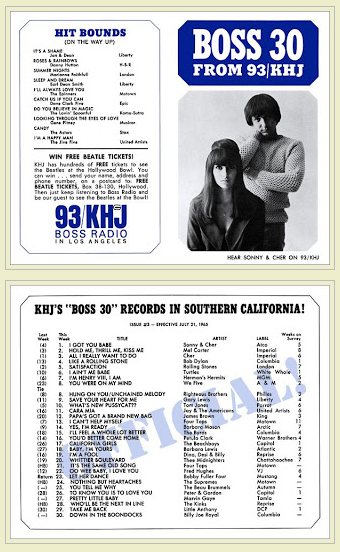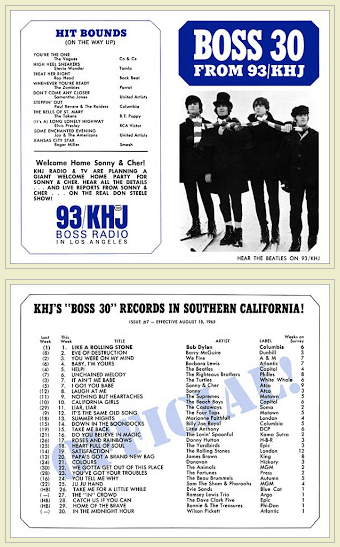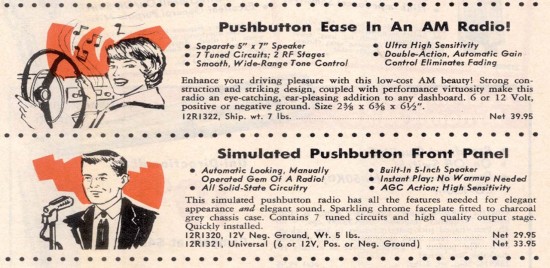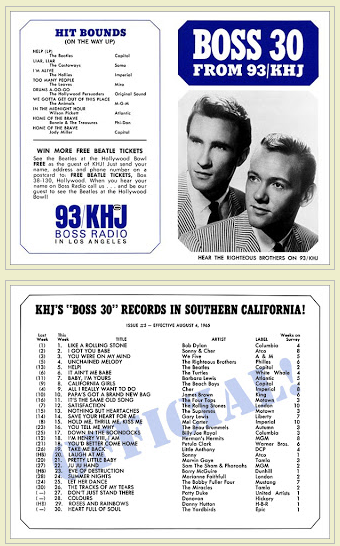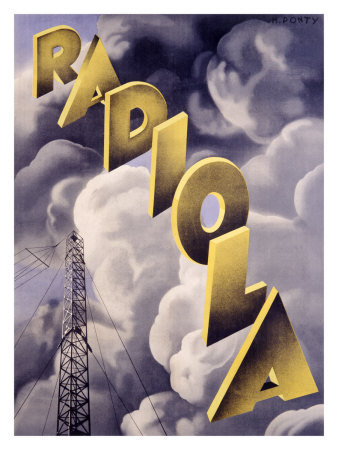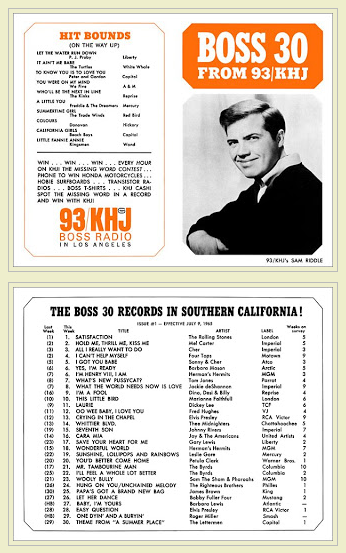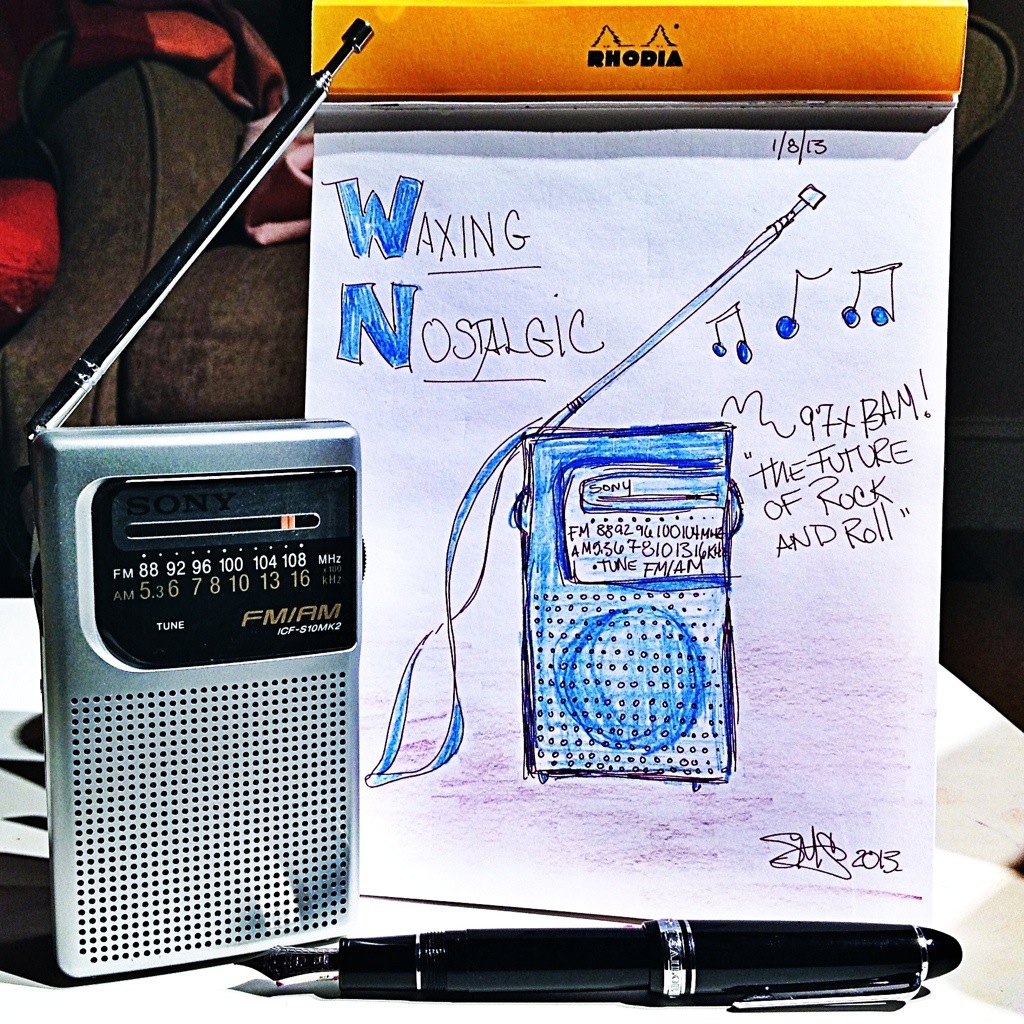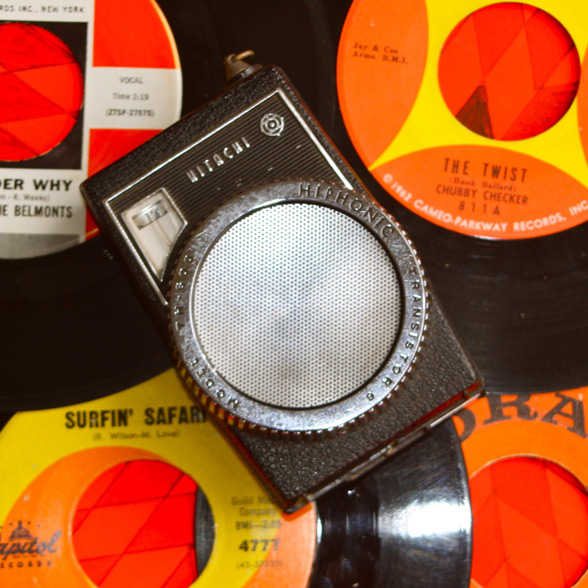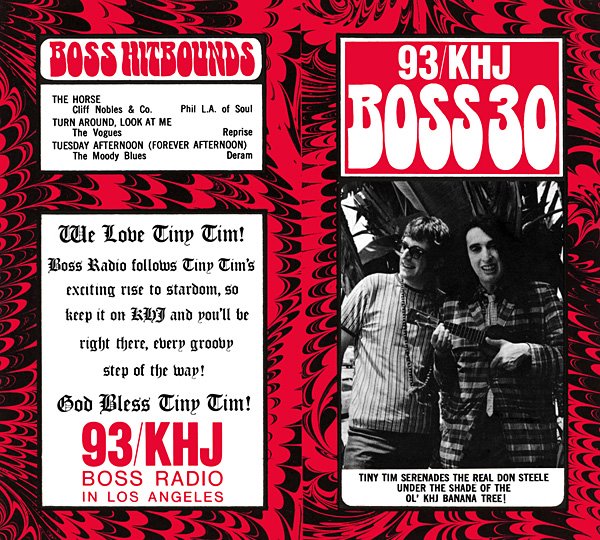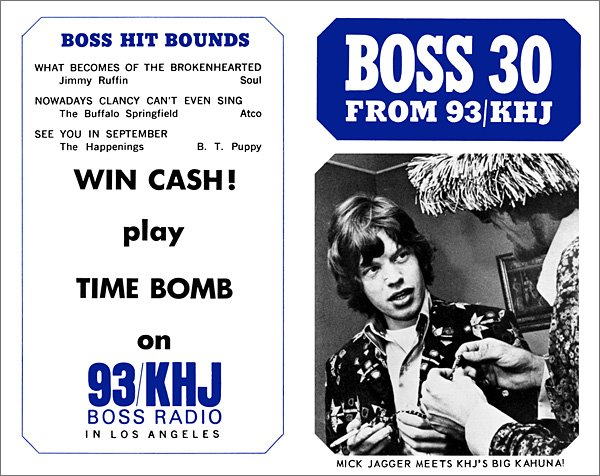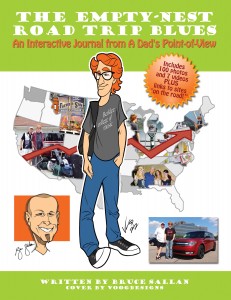By Professor David E. Weber and Bruce Sallan
Continuing with our never-ending – we hope – series on changes in technology and how it’s impacted our lives as well as simply going down memory lane, this edition of The Evolution of Technology looks at Top Forty radio lists. They began as ways of measuring which song was a hit, the most popular, and to give the music industry some statistical feedback. Much like ratings and other measuring tools, the public loved knowing something was #1, or as one DJ used to say, “Number One with a bullet!”
I’m going to start it off and Professor Weber will join in later. As we’ve written in our Transistor Radio column for this blog series, the transistor radio was a huge gift to teenagers. It allowed us a freedom heretofore not available. Yes, early radios were big – far from portable – and usually kept in a very public place in the family home. If we kids/teens were allowed to listen, it was with parental oversight to a degree that was partially inhibiting.
The transistor radio freed us of our parent’s attention. For me, that meant riding my bicycle down to the local record shop – called, The Frigate. I’d browse the records often and loved picking up that week’s KHJ Boss Thirty lists. KHJ Boss Radio was my station, along with KRLA. Both are now talk radio stations.
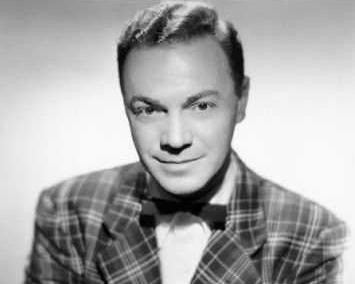 Alan Freed is said to have coined the phrase Rock n Roll
Alan Freed is said to have coined the phrase Rock n Roll
I am sure I have those collected Boss Thirty lists somewhere. I did find my old Hitachi transistor radio when I looked for it to include a photograph in the transistor radio column. Perhaps, I’ll dig through those old boxes and try and find them. I can literally picture the rubber band wrapped collection of at least 100 or more of them.
From Wikipedia: The Top Forty or Top 40 is a music industry for the currently most-popular songs in a particular genre. When used without qualification, it typically refers to the best-selling or most frequently broadcast popular music songs of the previous week. Top 40 became the dominant radio format of the 1960s, 1970s, and 1980s.
Ryan Seacrest currently hosts American Top 40 with Ryan Seacrest. Perhaps Casey Kasem is the name most associated with this Top 40 radio list format.
From Wikiepedia: Kemal Amin “Casey” Kasem (born April 27, 1932) is an American radio personality and voice actor who is best known for being the host of the nationally syndicated Top 40 countdown show American Top 40, and for voicing Shaggy in the popular Saturday morning cartoon franchise Scooby-Doo. Kasem, along with Don Bustany and Ron Jacobs, founded the popular American Top 40 franchise in 1970, hosting it from July 4, 1970 to August 6, 1988; and then from March 28, 1998 to January 3, 2004. Between January 1989 and early 1998, he was the host of Casey’s Top 40, Casey’s Hot 20, and Casey’s Countdown. Kasem retired on July 4, 2009.
For most of us – back in the sixties and seventies – these lists introduced us to new music in addition to simply hearing it on our favorite stations. There’s something about lists that just appeals to everyone. Maybe it’s not lists per se, but declaring winners and losers? Why else would awards shows be so popular? The Oscars is perhaps the biggest, most successful awards show. But, the popularity of so many others just validates our interest in knowing who is #1.
So, Professor Weber, let’s have an academic examination of this phenomenon from your knowledge and experience as a Professor of Communications – OOPS, I mean Communication – and also have your memories, which I rely on as a bank of my own memories. This is actually completely true, because David and I go back to literally knowing each other when we attended nursery school. I often reach out to him for a recollection about someone or some thing that I know he knew – either from direct experience together, or from my relating it to him. He’s my back-up memory and back-up hard drive. I’m eager to hear your thoughts on this subject.
Well, I’ll start with my own memories. Top 40 was the only radio format I remember listening to during junior and senior high school. In college I began listening to more “mature” formats on FM, although I didn’t renounce Top 40 radio, merely expanded my broadcast horizons.
Each of the Top 40 stations in Los Angeles, where Bruce and I were born and reared, had its own image. To prefer one over another was to say something about yourself, much as would buying a Honda instead of a Buick or a Porsche.
KHJ (930 AM, hence its nickname, “The Big 93”), at the top of LA.’s Top 40 heap, called itself “Boss Radio” and christened L.A. “Boss Angeles.” (“Boss,” a term borrowed from the Southern California surfing community, meant excellent, outstanding, best-in-class.) KHJ called its DJs—among them, Robert W. Morgan and The Real Don Steele (both cited by many radio and media professionals as a pioneers in Top 40 radio announcing), Humble Harve (who later got involved in a murder case as a defendant) and Sam Riddle—“Boss Jocks.” For years I could rattle off KHJ’s “Boss Jock” line-up—who had the six-to-nine morning slot, who the nine-to-twelve slot and so on through the day and night—just as reflexively as I could the batting order of the era’s L.A. Dodger baseball teams.
KHJ’s “Boss Radio” concept caught on nationally. Just one characteristic of the format was the tightly-constructed playlist that a DJ never departed from. Before “boss radio,” a U.S. DJ might simply play what he (few female DJs then!) liked or was paid under the table to play—but not at KHJ. Compared to DJs at other stations, the “Boss Jocks” tended to talk less, so that they could play more music. Indeed, The Big 93’s station jingle ran, “93 KHJ … plays more music.”
KHJ achieved a commercial radio station’s ultimate goal: the crafting and transmission of a distinctive message (that KHJ was boss, and if you listened, so were you), reinforced moment to moment within a universe designed around that message, all the while raking in hordes of listeners. By the late 1960s, a second Top 40 L.A. station, KRLA (1110 AM) decided it couldn’t compete with KHJ’s “Boss Radio” juggernaut. KRLA began to court slightly older, more worldly listeners, sprinkling its Top 40 playlist with longer, darker songs. An example: KHJ played the three-minute condensed version of “Light My Fire” (The Doors, 1967) but KRLA played the full eight-minute version. In the late afternoon most weekdays, KRLA would broadcast an irreverent show starring The Credibility Gap, a political-comedy team. Every week day “The Gap” presented hilarious “anti-establishment” material—imagine The Daily Show, but with no Jon Stewart figure, just the fake news reports. Each show was brand new—as was the brand new satirical song written each day by Gap member Len Chandler for that day’s broadcast.
The third Top 40 station, KFWB (980 AM) became a vaguely safe outpost for teenagers too straight for KRLA or too conventional for KHJ. For me, I was KHJ all the way (although I did enjoy “The Gap” and would forsake KHJ in the afternoon to catch the comedy show). Yet I tuned in KFWB, usually at bed time, when I sought a respite from the intensity of “Boss Radio.” One night, at almost midnight, the KFWB DJ played a record, “Matthew and Son” (by Cat Stevens, several years his early ‘70s hits and his conversion to Islam), that had just come into the station’s possession. When it ended, the DJ said, “What a great song! I’m gonna play it again.” And he did. Nothing like that would ever happen at KHJ, the bastion of no-surprises programming.
Bruce referred to his collection of KHJ’s weekly “Boss 30” list cards. I too collected these avidly. If I recall correctly, purchases of 45 r.p.m. records in local record stores dictated what songs would appear on any week’s “Boss 30.” The cards were perhaps 5×8, printed back and front, with a motif that matched the youthful aesthetic favored at the moment. For example, in 1967, the year of The Summer of Love, cartoonish flower imagery and balloonish lettering evoked “flower power.”
Every year KHJ released its “Boss 300,” a countdown of the top three hundred songs of all time. In practical terms, in the Top 40 radio universe, “of all time” really meant “of the past few years.” Out of 300 songs in 1967, for example, few had release dates further back than 1963. I believe that listener voting determined what songs made it onto a “Boss 300” list. Over a period of a couple of days, KHJ would play each of the 300 the songs in sequence, starting with the song in the Number 300 position. A day or two after the countdown ended, you could write (i.e., write a letter, delivered by the U.S. Postal Service, still named U.S. Post Office) to KHJ and request a copy of that year’s list. Published as a sort of pamphlet, it arrived in a white 9×12 envelope a few days later.
I recall that before the countdown KHJ kept secret the songs on that year’s Boss 300. In an era before leaks might appear in email messages, Facebook status updates and tweets, listeners remained in the dark until the first countdown broadcast began. In the days leading into the countdown, friends would avidly discuss what songs would most likely appear in the top ten. “Satisfaction” by the Stones had a virtual lock on a berth in the top ten. I remember listening to the radio for hours at a stretch to cram in as many of the 300 songs as I could, so many of them did I love, or want to hear for the first time.
How different today! Youtube makes just about any song available if you need a quick-fix listen. Or on iTunes you may purchase it for playback at your leisure. Or access sites where music can be downloaded for free. And what about Pandora and other Internet radio portals! With them you can design your own radio-style playlist.
I have nostalgic feelings for KHJ and “Boss Radio” and the rest … but hands down, I prefer today’s options for getting your favorite music into your ears.
So…a high school friend and classmate, Mike Wagner, was a radio professional, wearing many hats (on the creative side and the business side of the industry) for over a quarter of a century. I emailed Mike to ask if he would mind sharing with me some of his memories of the Top 40 radio of our youth. Here is what he wrote:
In late 1950’s L.A., KFWB and then KRLA, stopped broadcasting middle-of-the-road music (crooners, jazz legends, sultry divas, etc.) in order to target the under-30 rock-‘n’-roll generation. The new-style DJ’s were youthful, spoke quickly, with a large dose of reverb behind them. This instantly caught on. But there still was a lot of talking between songs and the reverb became gimmicky. So in April 1965, radio consultant Bill Drake launched Boss Radio—the Top 40 format that would change radio forever. Non-stop music (“And the HITS just keep on comin’!”), short jingles; energetic DJ’s who spoke over the short musical intros of songs and said little else; big, exciting contests; and requests from listeners who called in to get their favorite songs played: This was radio for the Baby Boom generation in, eventually, all major US cities. Boss Jocks…a weekly Boss 30 playlist distributed everywhere…plus non-stop temptations (such as the Boss Garage, a contest to win a new car of your choice) to never miss a minute of Boss Radio: That momentum addicted us all to The Big 93. I never imagined that 20 years later, I would be working with some of those legendary Boss Jocks, still going strong, when KRLA became an oldies station that I programmed from 1984 – 1995.
Please share your memories of AM Radio back-in-the-day.
How about skipping that $5 Starbucks latte and splurging $2.99 (for the Kindle on Amazon) or $2.79 for the PDF of my new e-book? Enjoy my own informercial for it! This e-book is really a virtual journey. It’s filled with 100 photos, 7 original videos, and links to many of the stops on the trip. Click on the book cover image below to find your purchase options:

